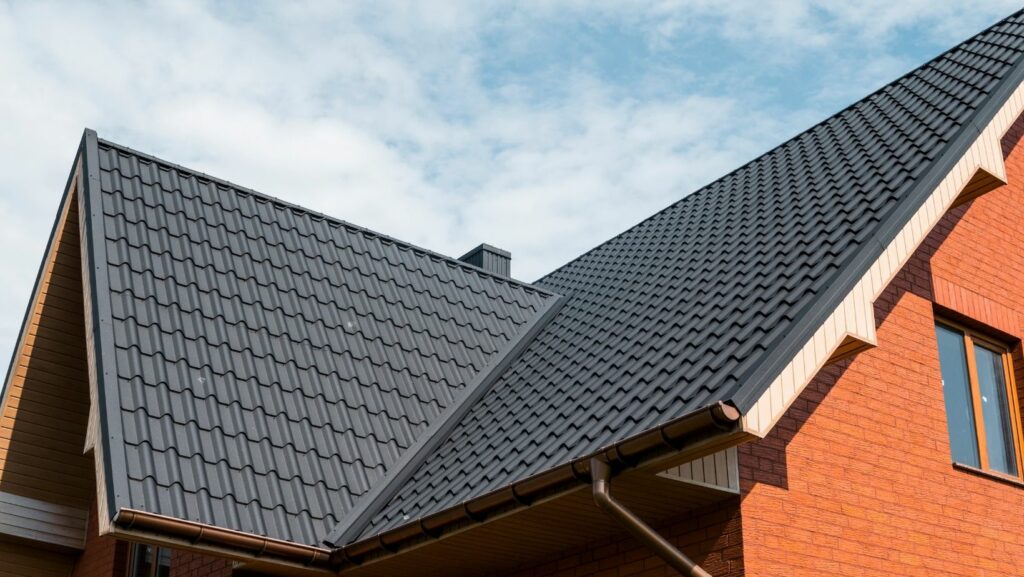When you think about roof damage, most people imagine sudden disasters like storms or falling trees. But in Warrensville Heights, it’s the slow grind of seasonal weather that does the most damage. From bone-chilling winters to humid summers and unpredictable storms in between, Northeast Ohio’s climate puts your roof through a year-round endurance test.
Understanding how Warrensville Heights’ unique weather patterns affect your roof is the first step to preventing premature wear, avoiding costly repairs, and extending the life of your home’s most important shield.
Winter: Freeze, Thaw, and Ice Dam Drama
Ohio winters are no joke. Between the freezing temperatures, snowfall, and the infamous lake-effect conditions, your roof is constantly under pressure.
The freeze-thaw cycle is one of the biggest culprits. Snow melts during the day, only to refreeze at night. This leads to expansion and contraction of roofing materials, causing them to crack, loosen, or even break apart entirely. Over time, this weakens the shingles and compromises the underlayment.
Ice dams are another winter menace. These occur when heat escapes from your attic and melts the snow on your roof. That water then runs down the roof and refreezes at the edge, forming a dam. Water backs up behind it and can seep under shingles, causing rot, mold, and interior leaks.
Pro Tip:
To fight back against winter damage, homeowners should ensure proper attic insulation and ventilation. Also, scheduling a roof inspection before the cold hits can catch small problems before they become big ones.
Spring: Rain, Wind, and Leftover Winter Damage
Spring in Warrensville Heights is a mixed bag, part refresh, part regret. As the snow melts, it exposes whatever damage winter has left behind. This is often the season when homeowners first notice missing shingles, soft spots, or sagging gutters.

Spring storms also pack a punch. Heavy rains and strong winds can rip off loose shingles or flood clogged gutters, pushing water back toward the roofline or even under the roofing system. Water intrusion at this stage can begin the slow process of rot and mold growth in your attic and walls.
Action Step:
A spring roof inspection isn’t just a good idea, it’s a must. Catching issues now can stop water damage before it snowballs into an insurance claim.
Summer: Heat and Humidity Take Their Toll
Summers in Warrensville Heights may not be as scorching as the South, but high humidity and prolonged sun exposure still do their fair share of damage.
Roofs absorb heat, and over time, UV rays can degrade asphalt shingles, making them brittle and prone to cracking. Meanwhile, the trapped humidity in the attic space, especially without proper ventilation, can lead to condensation. This becomes a breeding ground for mold and mildew, which can deteriorate roof decking and attic insulation.
Additionally, thermal expansion during hot days followed by rapid cooling at night accelerates aging in roofing materials. It’s subtle, but over years, it shortens the lifespan of your roof.
Tip for Longevity:
Consider reflective or energy-efficient roofing materials during your next replacement. These can help reduce heat absorption and extend your roof’s performance during Ohio’s humid summers.
Fall: Debris, Leaves, and Gutter Clogs
Autumn brings beautiful foliage to Warrensville Heights, but also another threat to your roof. Falling leaves and branches can clog gutters and downspouts, causing water to pool and back up under your roof’s edge.
Wet debris also holds moisture, which can accelerate the decay of shingles and roof decking. Plus, it invites pests like squirrels and insects looking for a warm winter hideout.
Tree limbs that hang too close to your roof can also scrape against shingles in high winds, loosening or damaging them over time.
Quick Fix:
Clean your gutters regularly and trim overhanging branches. A little prep in the fall goes a long way toward preventing water damage in the months ahead.
Why Local Knowledge Matters
While many national chains offer roofing services, working with a Roofing Company in Warrensville Heights ensures your contractor understands the specific weather-related challenges of this region. They know the toll each season takes on different materials, how to build roofs that withstand freeze-thaw cycles, and what ventilation systems work best for local humidity levels.
Local pros also have the inside scoop on city permits, HOA requirements, and the best times of year for replacements or repairs, so you’re not stuck mid-project during a surprise snowstorm or summer downpour.
Final Thoughts
Your roof is more than just shingles, it’s your home’s first line of defense against every drop of rain, flake of snow, and UV ray that Warrensville Heights throws at it. With proper maintenance and local expertise, you can extend its lifespan and save yourself from emergency repairs and premature replacement.
If your roof hasn’t had a check-up recently, now is the perfect time. Remember: when it comes to roofing, prevention is way cheaper than the cure.
